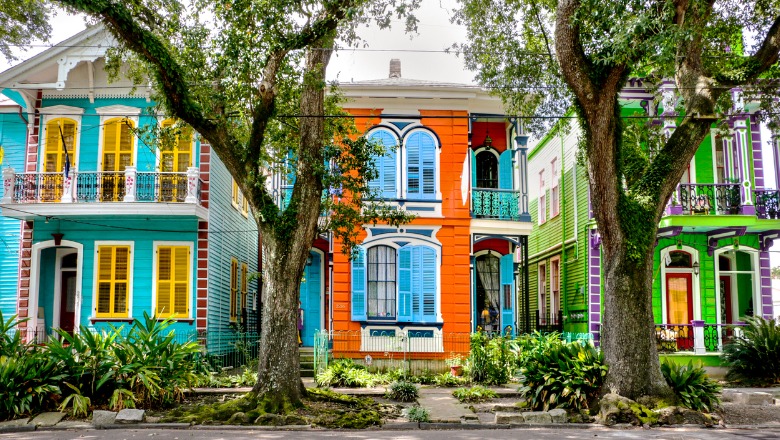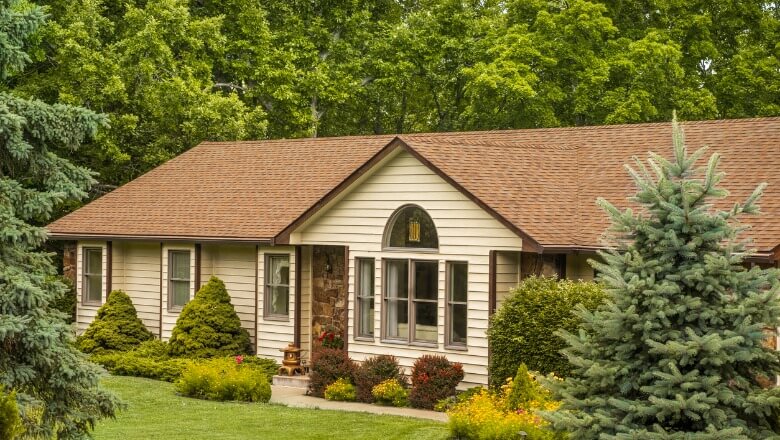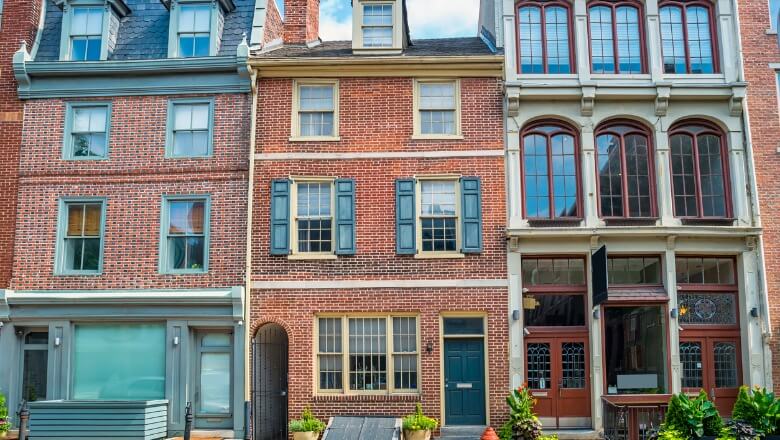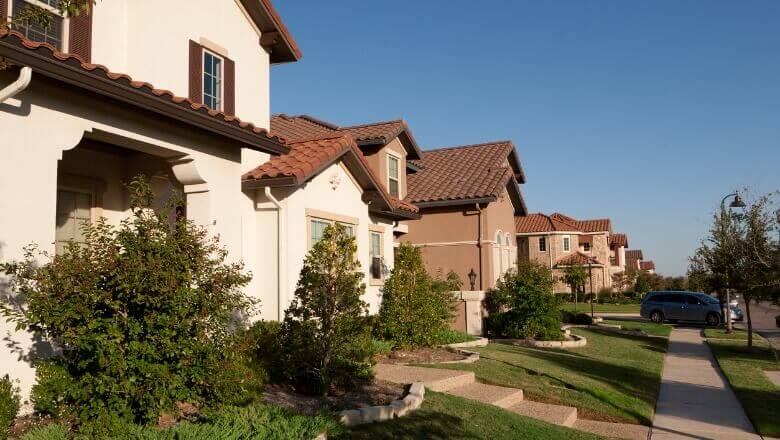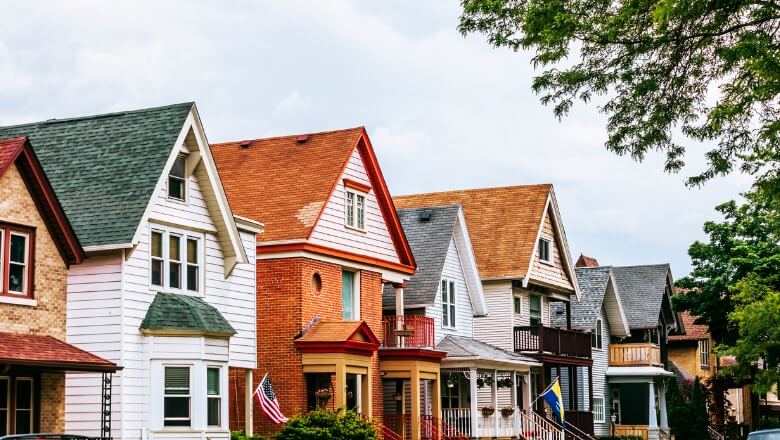Home Affordability Calculator
How Much House Can I Afford?
House hunting can be stressful. That’s why we are bringing you the “Houseculator.” Just input three quick numbers, and we’ll tell you how much house you could really afford. This is just one example of SoFi’s suite of financial tools working better together to help you achieve your home goals.
Preparing to buy a house? Call us for a complimentary mortgage consultation or get pre-qualified online.
How Much Mortgage Can I Afford?
The size of the mortgage you may be offered depends on your income, debts, credit history, assets, and down payment.
Fortunately, you can get an idea of how much of a mortgage you can afford by using calculators (like the one above) and prequalifying with lenders.
An old standard, the 28/36 rule, says that your mortgage payment shouldn’t be more than 28% of your monthly gross income and 36% of your total debt.
Mortgage lenders may run your financial information through a few different calculations when determining how much house you can afford based on income. You can do the math as well for a sense of how much house you can afford.
Ways to Calculate How Much House You Can Afford
Mortgage lenders may run your financials through a few different calculations when determining how much house you can afford based on income.
1. Debt-to-Income Ratio
Debt-to-income ratio is simply your total debt divided by your total income, shown as a percentage. Lenders use the ratio to help determine how much mortgage you can afford. Generally, 43% is the highest acceptable ratio a buyer can have and still obtain a Qualified Mortgage (a category of lower risk loans). To assess your ratio, plug your numbers into a home affordability calculator.
Example of DTI: To compute your DTI, simply add up all your monthly debts and divide by your gross monthly income, as in this sample:
• Auto loan: $320
• Student loans: $400
• Credit cards: $250
• Rent payment: $1,200
That’s $2,170 in monthly obligations. Now let’s say gross monthly income is $7,500. $2,170 / $7,500 = 0.289
Multiply the result by 100 for a DTI ratio of nearly 29%, meaning 29% of gross monthly income is going toward debt repayment.
2. The 28/36 Rule
The 28/36 rule combines two ratios that lenders use to determine home affordability based on income and debt. The first number sets 28% of gross income as the maximum total mortgage payment, including principal, interest, taxes, and insurance. The second number sets the limit on your mortgage payment plus any other debts you owe at no more than 36% of your gross income.
Example of the 28/36 rule: If your gross income is $6,000 per month, your magic numbers work out to be $1,680 and $2,160. According to this rule, you should aim for a monthly mortgage payment of $1,680, as long as your total debt (including credit cards, car payment, etc) doesn’t exceed $2,160.
You can try to follow the 28/36 in your household budget to get your finances in order prior to applying for a mortgage.3. The 35/45 Rule
Another option is to use the 35/45 method, which recommends that you spend no more than 35% of your gross income on your mortgage, and no more than 45% of your after-tax income to pay for all debt, including your mortgage.
Example of the 35/45 rule: Let’s say your gross monthly pay is $5,000 and your take-home income is $4,000. In this scenario, you should spend between $1,750 (5,000 x .35) and $1,800 (4,000 x .45) on your debt payments.
This model gives you a little more flexibility. However, if a large portion of your income already goes toward debt, other methods might be more suitable.
4. The 25% After-Tax Rule
With the 25% method, you spend no more than 25% of your after-tax income on your mortgage. If you make $4,000 monthly after taxes, you should spend no more than $1,000 per month on your mortgage. Because you are using a lower percentage with this method, it gives you less spending power than the other methods above. It’s a more conservative financial choice, and would allow room in your budget if, say, you were planning to have your first child or take on a new car payment after purchasing a home.
Example of the 25% after-tax rule: If you make $4,000 monthly after taxes, you should spend no more than $1,000 per month on your mortgage (4,000 x .25).
Remember, all of these methods are just benchmarks to help you decide how much you can afford. You’ll also need to consider your monthly budget and other financial goals (saving for a wedding, buying a second car, putting aside money for your children’s college) when determining a feasible mortgage amount. Using a home affordability calculator can help you refine and customize your estimate so you can see how different factors influence the price of the home you can afford.

Factors That Affect How Much House You Can Afford
Beyond the amount of debt and income you have, there are several factors that will affect how much house you can afford — primarily your down payment and credit score.
Your Down Payment
The larger the down payment you have saved, the more house you can afford. If you can manage at least a 20% down payment, you can avoid mortgage insurance, which will save you hundreds every month.
That said, you can get a mortgage with a smaller down payment — sometimes as little as 3% — through both conventional lenders or government-sponsored programs. And many homebuyers do: In an April 2024 SoFi survey of 500 would-be buyers, more than 60% of people said they were planning to put down 20% or less. Seven percent of buyers were planning zero-down-payment purchases.
If you’re selling your current home before buying a new one, the value of your home will ultimately determine your down payment. Be modest in your appraisal, or get the help of an experienced real-estate agent.
💡 Recommended: What Is the Average Down Payment On a House?
Interest Rate
Another factor that will determine how much house you can afford is the interest rate of your loan. Usually, the lower your interest rate, the lower your monthly payment. To qualify for the most favorable interest rates, you must have a strong credit score and a good financial standing.
While it’s easy to assume that a slight interest rate increase won’t impact your loan that much, this is far from the truth. Even an increase of two percentage points can cost you thousands of dollars over the term of your loan and add hundreds of dollars to your monthly mortgage payment.
Additionally, did you know mortgage rates may vary by state?
Current Mortgage Rates by State
Your Credit Score
Your credit score tells lenders the probability of timely loan repayment. A higher credit score demonstrates to lenders that you manage money responsibly. Since lenders don’t want to give funds to those who lack financial responsibility or likely won’t repay the debt, they set credit score guidelines. (In SoFi’s recent survey, more than one in 10 homebuyers (11%) said an insufficient credit score was one of the challenges they were facing.) Credit score guidelines help determine if they will approve a home loan.
Conventional mortgage loans typically require a credit score of 620 or higher. Jumbo loans may require a minimum score of 700. FHA loans allow a credit score as low as 500, while USDA loans set the bar at 580.
Let’s say you apply for an FHA loan, a mortgage insured by the U.S. Federal Housing Authority. You’ll need a credit score of 580 or above to be eligible for 3.5% down payment. If you have a credit score below 500, you will need at least a 10% down payment.
Applying for a prequalification or preapproval will help you pinpoint how your credit score will impact the kind of house you can afford. Basically, a preapproval estimates the loan terms and loan amount you may qualify for, making it easier to determine the mortgage payment you can afford.
Debt-to-Income Ratio
A debt-to-income (DTI) ratio is the percentage of your income that goes toward paying off your debt each month. Credit card, car, and student loan payments all go into your total DTI. The more debt you have, the higher your DTI will be. In addition to your credit score and salary, lenders look at your DTI to assess how much house you can afford.
Generally, lenders use a 36% DTI as a good benchmark for loan approval. However, some lenders will approve a loan if you have a higher DTI.
Annual Salary
When you apply for a mortgage, lenders use your salary as one of the determining factors of mortgage payment affordability. Lenders do this because they don’t want to shell out funds to borrowers who can’t afford the monthly payments. Thus, taking a look at your salary will help the lender assess if the payment works within your budget.
Unlike your credit score, lenders don’t have salary parameters for approving a mortgage. However, you must provide documentation to support how much you make. Lenders will usually want to review your W-2s and pay stubs (or 1099s for self-employed folks). If your income isn’t consistent throughout the year, either due to self-employment or seasonal work, your lender will typically want an explanation of the variations in the income stream.
💡 Never purchased a home? Check out our First-Time Homebuyer Guide to help you through the process.
How Much House Can I Afford With an FHA Loan?
Mortgages insured by the Federal Housing Administration are issued by private lenders like banks, credit unions, and mortgage companies that offer them, which factor an applicant’s credit score (sometimes as low as 500) and two ratios into an offer of an FHA loan:
• DTI ratio. Up to 50%, if the credit score is at least 580 and other qualifications are in place.
• Front-end ratio, or the ratio of proposed monthly mortgage payments to monthly income. Can be as high as 40% if the credit score is at least 580.
If your credit score is from 500 to 579, you may be able to get an FHA loan and put 10% down. If your score is 580 or higher, you may put as little as 3.5% down.If you have a credit score below 500, you will need at least a 10% down payment.
Home loan limits vary by area for traditional FHA loans, which may be used for up to four units as long as the buyer lives in one unit. An upfront mortgage insurance payment of 1.75% of the purchase price and annual mortgage insurance premiums (MIP) apply.
How Much House Can I Afford With a VA Loan?
The Department of Veterans Affairs issues some home loans directly, but most VA loans are guaranteed in part by the VA and procured from private lenders.
VA loans are for active-duty service members, veterans, and some surviving spouses. Lenders often look for a minimum credit score in the low to mid-600s and a DTI of 41% or under, but those figures are not set in stone.
There is no home purchase limit if a borrower has never used a VA loan, has paid off a VA loan and sold the property, or has had a foreclosure or short sale but repaid the VA in full.
No down payment is required as long as the sales price of the one- to four-unit owner-occupied property or VA-approved condo does not exceed the appraised value. Most borrowers will pay a one-time funding fee of 1.4% to 3.6% of the amount being borrowed.
Ready to start your home buying journey?
Get in touch with a Mortgage Loan Officer for a complimentary mortgage consultation. If you’re ready to jump in, get pre-qualified online in minutes.
How Much House You Can Afford Based on Annual Income
By now, you have a good idea of how much home you can afford. However, the chart below might help you visualize the type of home you’ll be able to buy based on your income.
Using a consistent interest rate helps you see the difference clearly; in the real world, of course, your interest rate may vary based on lender, your credit rating, your down payment and more. The chart assumes:
• 10% of monthly income going toward debt payments
• 30 year mortgage term
• 6.29% interest rate
• 25% of salary used for a down payment
| 28% = Home Price | 36% = Total Debt | |
|---|---|---|
| What kind of house can I afford making 40K a year? | $97,141 | $136,261 |
| What kind of house can I afford making 50K a year? | $121,463 | $170,363 |
| What kind of house can I afford making 60K a year? | $145,638 | $204,319 |
| What kind of house can I afford making 70K a year? | $169,960 | $238,421 |
| What kind of house can I afford making 80K a year? | $194,282 | $272,523 |
| What kind of house can I afford making 90K a year? | $218,457 | $306,478 |
| What kind of house can I afford making 100K a year? | $242,779 | $340,580 |
Expenses That May Change How Much House You Can Afford
By now, you have a good indication of how much house you can afford based on income, debt, down payment, and credit score. If you’re ready for the next level of detail, keep these expenses in mind to help you avoid any budget-busting surprises.
Insurance
The cost of homeowners insurance varies dramatically by area — it’s no wonder that 39% of would-be buyers in SoFi’s survey said home insurance costs were a top concern for them. Oklahoma and Texas have the highest average homeowners insurance cost at around $3,700 per year. That’s because homes there have a higher chance of being destroyed by a tornado. Areas with fewer natural disasters cost around $900. Homeowners insurance is a part of your 28% mentioned above. If your premium is especially high, you may need to pick a home at a lower price point.
Homeowners Association (HOA)
In some neighborhoods and apartment buildings, a monthly homeowners association (HOA) fee helps pay for communal services like landscaping and elevator maintenance. A higher HOA fee will reduce how much you can afford to a surprising degree. Be sure to factor in the HOA fee when calculating your mortgage payment, and remember that HOA fees aren’t fixed — they can change from year to year, and they rarely go down. Fully 26% of homebuyers said HOA fees were a top concern for them in SoFi’s survey.
💡 Recommended: A Beginner’s Guide to Homeowners Associations (HOA)
Mortgage Insurance
When homeowners have less than a 20% down payment, they are required to carry something called mortgage insurance, or private mortgage insurance (PMI). The amount is a percentage of your loan, so the larger your mortgage, the larger mortgage insurance payment you’ll have.
Other Expenses
But wait, there’s more! These expenses won’t affect your loan but can still have a major impact on your budget.
• Closing costs. Expect to pay between 3% and 5% of the loan amount in closing costs (lawyer fees, home inspection, etc). For the average $450,000 home in the U.S., that’s at least $13,500. Sometimes you can roll your closing costs into your loan, but that’s more common with a refinance.
• Maintenance. The costs of homeownership can be quite hefty no matter how old your home is. If you’re not used to paying for repairs, it can be a real shock how much you’ll need to pay to repair plumbing, HVAC, roofing, and other issues that will naturally come up as the home ages. Experts advise to plan for spending 1% to 4% of the value of your home each year in maintenance costs.
• Commuting costs. If you’re moving to the suburbs or an area where public transportation isn’t readily available, your commuting costs may increase substantially. Be sure to factor these into your budget before taking on a mortgage payment.
• Appraisal fee. The lender will assess the value of the new property for a fee, usually between $300 and $500.
💡 Recommended: Home Appraisals 101: What You Need to Know
• Home inspection fee. Home inspections ensure properties are structurally sound and there are no underlying issues with the home that might deter a potential buyer. Home inspections cost between $250 and $400 on average.
Tips When You Can’t Afford the House You Want
Let’s say you don’t qualify for a mortgage sufficient to buy a home in your desired area. Don’t give up: There are some things you can do to keep moving toward homeownership.
Look for Programs Specifically for Low-Income Households
You may qualify for down payment assistance, grants, or programs designed for low-income households. Self-help build programs, which allow you to build equity by making improvements to the house, also subsidize the interest rate on your mortgage or offer a longer term on your loan. This can help make the monthly payment match your budget. A Housing and Urban Development (HUD) counselor may be able to point you in the direction of programs in your area.
💡 For additional help, check out these first-time homebuyer programs.
Consider a Cosigner
It’s not uncommon to see a cosigner alongside a mortgage applicant. A cosigner is responsible for the mortgage if the primary borrower is unable to pay. They must have a credit score above 670 and show they have sufficient income to make payments on the loan if the original borrower defaults. If you’re sure you’re able to make the mortgage payment, a cosigner could be just what you need to become qualified.
Increase Your Income
Sure, it’s easier said than done to increase your income. However, negotiating a pay raise, finding higher-paying work, or taking on a side hustle could help the income equation on your mortgage application.
Consider a Different Area
Rural locations tend to be much more affordable. Choose a qualified rural area, and you could finance a home with a zero-down United States Department of Agriculture (USDA) loan. You’ll have to weigh the benefits of cheaper housing against living farther from family support and possibly fewer available job opportunities. If rural life isn’t for you, explore local housing market trends in cities if you are considering an out-of-state move.
Reduce Your Debt
If debt is preventing you from qualifying for a mortgage and your top goal is to get into a home, a laser-like focus on paying off your debt can help. Try using any “bonus” money — your tax refund, birthday cash — to pay it down. Above all, make a solid, strategic plan to pay off debt (and get your partner on board).
Look for Low-Down-Payment Mortgages
Many conventional lenders (banks, credit unions, etc.) accept a 3% down payment if you meet specific requirements. Some requirements include a DTI of less than 43% and a credit score of 640 or above. FHA loans require as little as 3.5% down, whereas VA loans have no down-payment requirements. If you haven’t saved much cash, a loan with lower down-payment requirements can help you qualify for a mortgage.
Ask for Down Payment Gifts
Requesting down payment gifts from close relatives may ease the financial burden of buying a home. However, conventional loans may require you to use some of your own funds to qualify for a mortgage. Remember, you can also use some gift money to pay for closing costs or other housing expenses.
Take a Retirement Account Withdrawal or Loan
If you need extra cash for a down payment, consider taking a traditional IRA withdrawal or a 401(k) loan. Traditional and Roth IRA rules state that those who haven’t owned a primary home in the previous two years can withdraw up to $10,000 for a down payment without paying the 10% early distribution penalty. And if you have a 401(k), your employer may allow loans. This means that you can borrow money against your 401(k) for a home. However, you must pay interest and usually pay back the principal within five years.
Consider Whether Buying a Home Makes Sense
If you’ve exhausted your options and still can’t seem to make the numbers work on a home purchase, it’s time to refresh your memory as to the advantages of renting. Focus on paying down debt and stop trolling real estate websites for a while. You’ll emerge from your home-buying hiatus refreshed and ready to make the next move.

The Takeaway
Once you have a good sense of how much house you can afford, the next step is to start the process of securing a home mortgage loan. Getting prequalified for a loan will help you understand if your vision of what you might borrow aligns with a lender’s assessment.
Looking for an affordable option for a home mortgage loan? SoFi can help: We offer low down payments (as little as 3% - 5%*) with our competitive and flexible home mortgage loans. Plus, applying is extra convenient: It's online, with access to one-on-one help.
FAQ
Why use a home affordability calculator?
A home affordability calculator can help you identify how much house you can afford, and determine a mortgage payment that fits within your budget. This way, you can be confident that you won’t ever feel “house poor.”
How much do I need to make to buy a $450K house?
A salary between $135,000 and $140,000 will help you afford a 450k home. But of course, affordability will also depend on your down payment and other financial factors like your credit score and debt-to-income ratio.
Is $50,000 enough for a down payment on a house?
Yes. Generally, you need a 3% to 20% down payment to purchase a home, depending on the type of loan. So, if your lender requires a 20% down payment, $50,000 will help you qualify for up to a $250,000 loan.
How many times my income can I afford in a house?
Aim to buy a house that equals about three times your yearly income. If you have no other debts, you can probably spend more than this. This calculation may not work for every situation and housing market. A mortgage lender can help with your unique situation.
What is the mortgage on a $500K house?
For a conventional loan with a 20% down payment and an interest rate of 5%, the payment for a $500K house would be $2,147 for principal and interest. What you may actually pay would depend on your specific interest rate, down payment, and loan type.
How much house can I afford if I make $100,000?
Assuming you’ve set aside $20,000 for a down payment and don’t have a lot of other debts to pay, you should be able to afford a house that costs around $200,000. Your monthly mortgage payment on a loan with an interest rate of 5% would be about $1,350. A mortgage calculator can help you get closer to your specific house budget.
How much money do you need to save for a house?
The typical first-time homebuyer makes a down payment of seven percent of the purchase price, according to the National Association of Realtors. So if you were buying a $250,000 home, you would need to have $17,500 saved. You’ll also want a cushion of money to cover closing costs, moving expenses, new furniture, or other one-time costs associated with your move.
Is it worth saving 20% for a house?
Being able to put down 20% will help you qualify for a favorable mortgage rate and loan terms, but if you don’t have 20% and can still make the monthly mortgage payments, many lenders will help you finance your purchase for less than 20% down — some as low as 3%.
SoFi Loan Products
SoFi loans are originated by SoFi Bank, N.A., NMLS #696891 (Member FDIC). For additional product-specific legal and licensing information, see SoFi.com/legal. Equal Housing Lender.
Terms, conditions, and state restrictions apply. Not all products are available in all states. See SoFi.com/eligibility-criteria for more information.
*SoFi requires Private Mortgage Insurance (PMI) for conforming home loans with a loan-to-value (LTV) ratio greater than 80%. As little as 3% down payments are for qualifying first-time homebuyers only. 5% minimum applies to other borrowers. Other loan types may require different fees or insurance (e.g., VA funding fee, FHA Mortgage Insurance Premiums, etc.). Loan requirements may vary depending on your down payment amount, and minimum down payment varies by loan type.
Financial Tips & Strategies: The tips provided on this website are of a general nature and do not take into account your specific objectives, financial situation, and needs. You should always consider their appropriateness given your own circumstances. SOHL-Q324-107More articles and resources
Get prequalified in minutes for a SoFi Home Loan.

















